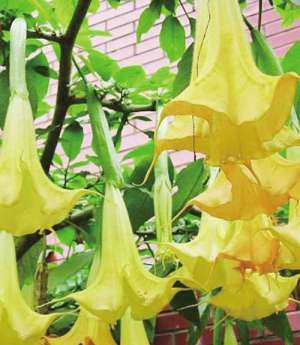一掌之叶:觉知 A Handful of Leaves: Awareness
2-1-1-5. A Handful of Leaves: Awareness一掌之叶:觉知
To practice insight-meditation, the Buddha teaches us to develop four foundations of awareness, namely;
在练习观禅(内观禅修)方面,佛陀教导我们培养正念觉知(sati)的四个基础,即——
1. KAYANUPASSANA SATIPATTHANA, that is, to meditate on the body in the body and see according to actuality that this body is only just a body; it's not a being, an individual, nor a self. It is neither me nor it.
1. 身观念处:即以「身体或身内」为所缘而禅修,并且如实见到身体只是身体,不是实有、不是实体、也不是自我,它既非我亦非它。
2. VEDANANUPASSANA SATIPATTHANA, to meditate on the feelings and see according to actuality that these feelings are only just feelings; they are not a being, an individual, nor a self. They are neither me nor them.
2. 受观念处:以「觉受」为所缘而禅修,并且如实见到这些觉受只是觉受,不是实有、不是实体、也不是自我,它们也是非自非它。
3. CITTANUPASSANA SATIPATTHANA, to meditate on the mind in the mind and seeing according to actuality that this mind is only just mind; it is not a being, an individual, nor a self. It is neither me nor it.
3. 心观念处:以「心」为所缘而禅修,并且如实见到心只是心,不是实有、不是实体、也不是自我,它既非我亦非它。
4. DHAMMANUPASSANA SATIPATTHANA, to meditate on the mental objects in the mental objects and seeing according to actuality that these mental objects are only just mental objects. They are not a being, an individual, nor a self. They are neither me not them.
4. 法观念处:以「法(mental object)」为所缘而禅修,并且如实见到这些法只是法,不是实有、不是实体、也不是自我,它们既非我亦非它。
The teachings of the Buddha are many; I'm not able to describe all of it. We've probably heard that at one time, our Buddha was walking with a number of monks in the forest. Seeing fallen leaves scattered around, the Buddha picked up a handful of leaves and asked those bhikkhus, 'Monks, which is more, the leaves in my hand or all the leaves in the forest?' The bhikkhus answered, 'The leaves in the forest are more than those in your hand, so much so that they cannot be compared.' The Buddha then taught that the knowledge and understanding that the Buddha had studied was comparable to the leaves in the forest, and the knowledge that He taught us was comparable to a handful of leaves.
佛陀的教导有很多,我无法介绍他所有的教导。大家可能听过:有一次,佛陀与一群此丘在森林中行走,佛陀看到满地都是落叶,于是拣起一把的叶子问那些比丘们:「比丘们!哪个比较多呢?是我手上的叶子多,还是森林里所有的叶子多呢?」那些比丘们回答:「森林里的叶子比你手中的多,而且多到不能比。」于是佛陀教导说:佛陀学过的知识和智能就像森林里的叶子那么多,而他教导我们的就像手中的叶子那么少。
The leaves in the forest stand for making merit, generosity, keeping precepts and developing tranquility-meditation, and the handful of leaves for insight-meditation. However, to do Vipassana we have to study through listening and reading at first, before we start practicing. Otherwise we'll waste a lot of time gathering all the leaves in the forest.
森林里的叶子就是指做功德、布施、持戒和练习止禅,而手中的叶子就是指观禅(内观禅修)。然而,在练习毘婆舍那之前,我们必须先听闻并阅读经典,否则会浪费很多时间在收集森林里的叶子。
The practice of Vipassana that the Buddha teaches through developing the four Satipatthana, means learning to be aware. The Buddha said that there are two things that are of great assistance, namely 1. SATI: to recollect; * before doing or thinking anything, know it with awareness, and 2. SAMPAJANYA: to realize; the moment we're thinking something, to realize it fully. SATI-SAMPAJANYA, when using ordinary language, just means to wake up, to awaken, to feel oneself all the time.
佛陀教导的藉由培养四种念住(Satipathana)而修的毘婆舍那,也就是要练习保持觉知。佛陀说有两样东西能产生大帮助,那就是——
1. 正念(Sati):即忆念不失*,也就是在做或想任何事情之前,要有觉知地知道它。

2. 正知(Sampajanya):即了知,也就是在我们想事情的当下完全地了知它。
正念-正知,用一般的话来说就是清醒、觉醒、随时感知到自己(的身口意活动)。
- 准提咒正确念法
- 太上清心咒全文
- 为什么晚上不能听大悲咒
- 超度经文往生咒全文
- 准提咒功德及妙用求财
- 62条人生妙言妙语,帮助你
- 诵大威德金刚咒的感应
- 长寿佛心咒注音
- 普贤行愿品全文诵读含仪轨
- 六字真言作用和功效
- 药师佛心咒正确念诵的方法
- 简单的清心咒口诀
- 六字真言的作用和功能
- 普门品念诵的正确方法
- 准提咒手印全图
- 普贤行愿品回向文全文
- 净身 口 意三业真言拼音
- 金刚经四句偈语解释
- 普贤行愿品全文念诵仪轨
- 道家静心咒原文
- 大悲咒原版30分钟mp3
- 准提咒回向文大全
- 心经可以随便抄吗
- 准提咒全文正确注音
- 天眼看持准提咒人
- 准提咒全文拼音版
- 诵金刚手菩萨圣号的感应故
- 《金刚般若波罗蜜经》
- 楞严咒快速记忆法
- 念坚牢地神咒的感应
- 财神咒念诵108遍
- 药师咒念诵正确方法有哪些
- 准提咒晚上不能念
- 家里播放普庵咒的禁忌
- 普贤行愿品偈颂全文
- 在家诵地藏经正确仪轨及回
- 念大悲咒使人阳气上升
- 《金刚经》全文-金刚经原文
- 女子在家念地藏经注意事项
- 地藏菩萨心咒108遍
- 神龛 The Spirit Shrine
- 礼敬佛陀 Paying Homage To The B
- 破愚痴见惑的阶位:初禅 T
- 直取快捷方式的摘要 Summary
- 矫正观念 Adjusting Views
- 毘婆舍那与平静 Vipassana and
- 直取快捷方式 Taking a Shortcu
- 正确培养觉性,三年便能证
- 正确培养觉知的果报 The Res
- 果报:心地清净 The Result :
- 果报:出世间 The Result Is To
- 果报:当下的天堂与涅槃 T
- 教外之法门 Things Outside of B
- 断烦恼执着的阶位:二禅 T
- 无上的庇护 The Exalted Refuge
- 教外之教导 Teachings Outside o
- 教内之教导 The Teachings insid
- 教内之法门 Things Inside of Bu
- 开光仪式 Opening-Ceremony
- 总结平静之道 Summary
- 庄严圣洁之物 Sacred And Holy
- 平静之道 The Path of Peace
- 幸运日 Lucky Days
- 培养觉知·生起智慧 Developi
- 寂静与涅槃 Peace And Nibbana
- 圣眼与圣耳 Divine Eye - Divine
- 地狱、天堂、涅槃 Hell , Hea
- 善人与恶人 Virtuous People - E
- 善果现起 The Outflow Of Good Re
- 凡与圣 Ordinary Beings and Noble
- 前言 Foreword
- 其它 Miscellaneous
- 具德者的宝藏 The Treasure Of
- 人的种类 Some Types Of People
- 以自为依·如法而行(自依·
- 修学阶段 Stages of Practice
- 了悟平常心:三禅 Normality
- 一掌之叶:觉知 A Handful of
- 了悟人人本具 Knowing that it
- 往生极乐世界 愿心为先
- 悟显法师:华严、法华均圆
- 我修学了凡四训的一些做法
- 张智霖:经营自己的肉身(图
- 惟觉法师:佛法与世间法
- 心律法师:忍辱苦修成大业
- 恬静安逸 清新隽美—评画家
- 我的修学报告:阿难问事佛
- 放生蛇会报恩吗?
- 恭敬心很重要
- 悟妙法师:我经常感到痛苦
- 怎样获得美好姻缘?
- 很想用所学到的佛法知识影
- 悟毅:学佛对我人生的影响
- 想清凉“爽一夏”吗?峨眉
- 往生极乐世界是为了更好地
- 念观音圣号提前合掌往生
- 大安法师:回向的功德是否
- 怎样戒烟
- 心律法师:最好的悟禅之道
- 悟显法师:印经布施开智慧
- 张继宝不孝遭雷殛
- 惟觉法师:六祖坛经 憨山大
- 放生蛇之详细攻略
- 我受了12年的等流果和增上
- 悟强:你快乐吗?谈大方和
- 恭迎伽蓝菩萨圣诞!教您唱
- 我的前半生从死阴的幽谷到
- 大安法师:因微果丰、做怪
- 往生极乐世界最殊胜
- 念佛感应见闻记:阿伽陀药
- 心律法师:脱掉你脆弱的外
- 悟显法师:口业清净不染尘
- 念佛不出声心里默念可以吗
- 悟演法师:三止三观
- 感恩上净下空老法师
- 很重要,去寺院吃饭要注意
- 悟显法师:万般将不去,唯
- 想看到僧宝的功德也需要大
- 怎样才可以彻底放开一个人














